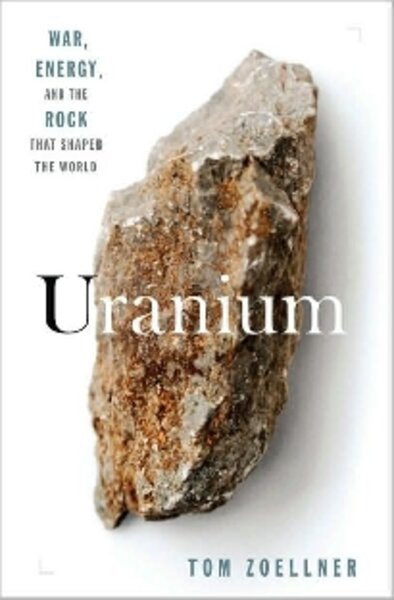Uranium
Loading...
Books about the making of atomic weaponry proliferate, as do the deadly bombs. Probably every reader of books about the nuclear age understands that uranium is a necessary ingredient in the making of atomic bombs. But it is the rare book for a general audience that focuses on uranium itself.
Tom Zoellner figured out that gap in the nonfiction literature, and so decided to fill it with his new book Uranium: War, Energy and the Rock That Shaped the World.
He does so skillfully. Zoellner possesses the gift of making complex science clear, while weaving the saga of the historically unwanted rock into a compelling narrative.
What could be more compelling, ultimately, than the destruction or survival of the human race? Uranium dust scattered on the earth provides a paradoxical twist to the saying “from dust to dust.” As Zoellner comments, “The earth came seeded with the means of its own destruction, a geologic original sin.”
Uranium that can be processed for use in weapons manufacturing and the more benign nuclear power plants that heat and light cities cannot be found just anywhere. The deposits which allowed the United States government to construct the bombs that ended World War II came mostly from what used to be known as the Belgian Congo, more specifically in an area called Shinkolobwe.
Zoellner calls the remote African mining site “a perverse miracle, a globule of radioactivity that had burbled up from deep in the earth’s crust five million years ago. Like most uranium deposits, it had seeped upward in carbonate solution and become trapped in the sinews of clays and granites. But its purity was more than 200 times that of most uranium deposits. This would turn out to be a unique occurrence in the history of the planet, and now it stood as the best chance for the United States to gain a chokehold on world supply.”
An explorer for a Belgian mining company had discovered the deposit in 1915, before nuclear energy used for evil and good became a reality.
At first, the Belgian conglomerate found uranium mining through slave labor profitable because of the medical market. Radium, derived from uranium, had gained a reputation for curing cancer miraculously. A gram of radium could bring $175,000 (in 1915 dollars), about 30,000 times the price of gold.
Fast forward to the 1930s, as physicists motivated by wartime imperatives figured out how to attack the volatile atoms within processed uranium to unleash destructive energy that could destroy entire cities, with additional deaths tallied as survivors of the original blast contracted radiation poisoning.
The US government made a deal with the Belgian mining bosses to quietly ship the substance to the North American continent. At top-secret sites in Washington State, Tennessee, and New Mexico, the relatively straightforward but expensive process to extract bomb-grade material from what had been considered a trash rock geared up.
After Zoellner dispenses with World War II-related uranium lore, he covers the uranium saga from multiple angles. Some of the book’s latter half is organized geographically, as Zoellner demonstrates the moral and financial impacts of uranium fever in locales as diverse as Niger, Australia, and the state of Utah. Other portions of the book are organized by the product-yields of uranium – medical treatments, energy to power homes and businesses, and decorative uses (despite the danger.)
The perils are rarely far from the center of the discussion, even when everybody involved in a uranium enterprise is well intentioned.
After all, Zoellner explains, uranium “cannot undergo fission in a reactor without producing a tiny residue of plutonium,” the form used in bombmaking. “A ‘peaceful’ nuclear reactor is no different in basic design from the complex at Hanford [Washington State] that manufactured the plutonium for the Nagasaki bomb.”
Then, Zoellner comments sagely, “herein lies one of the damnable paradoxes of uranium: The apparatus that spins a turbine also happens to be a munitions plant. One is a coefficient of the other; the mineral cannot escape its own unstable essence.”
It is remarkable how the fate of the human race can reasonably be predicted through the exploitation of a rock rarely encountered by most women and men.
“In this rock we can see the best and worst of mankind,” Zoellner comments. “The capacity for scientific progress and political genius, the capacity for nihilism, exploitation and terror.
We must find a way to make peace with it. Our continuing relationship with uranium, as well as our future as a civilization, will depend on our capacity to resist monitoring that grim and never-ceasing instability that lies within the most powerful tool the earth has to give.”
Steve Weinberg is an investigative reporter in Columbia, Mo.






